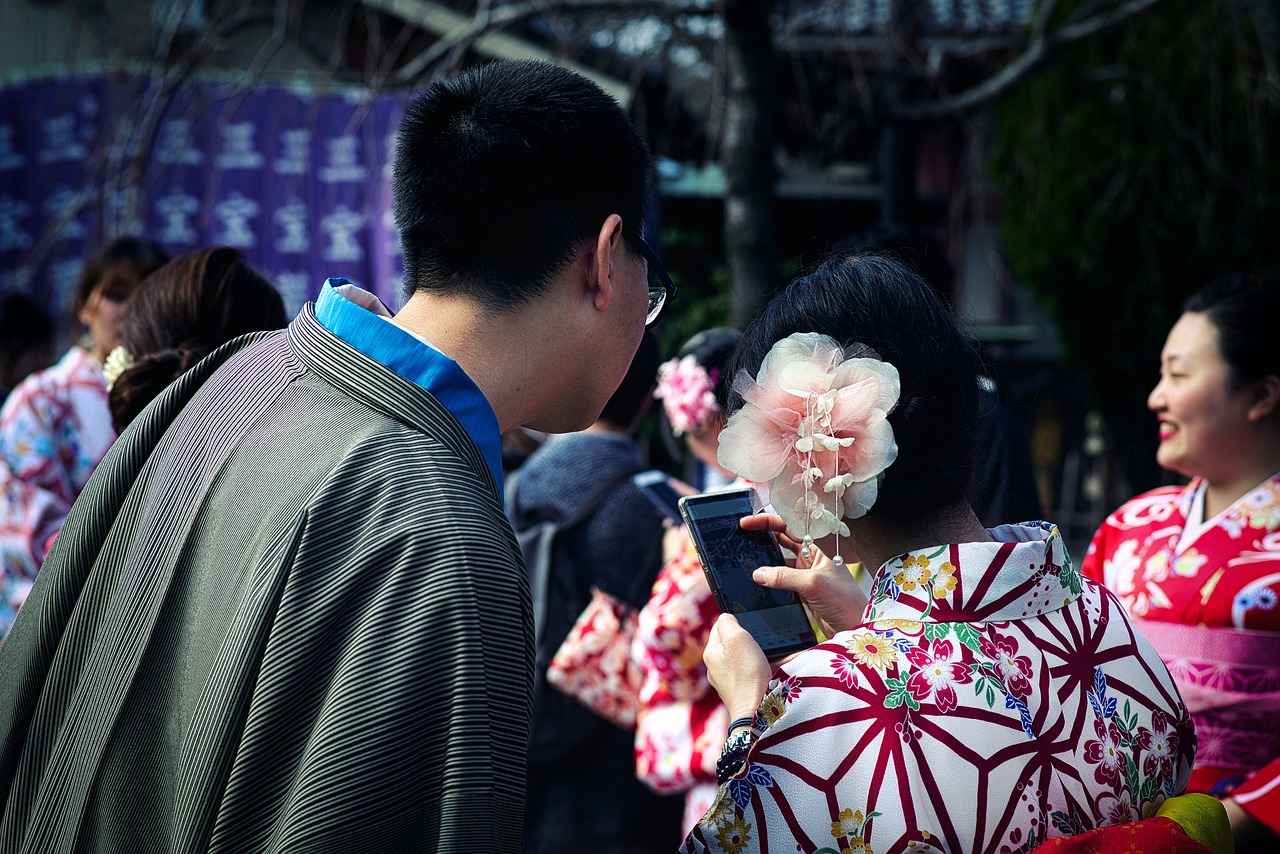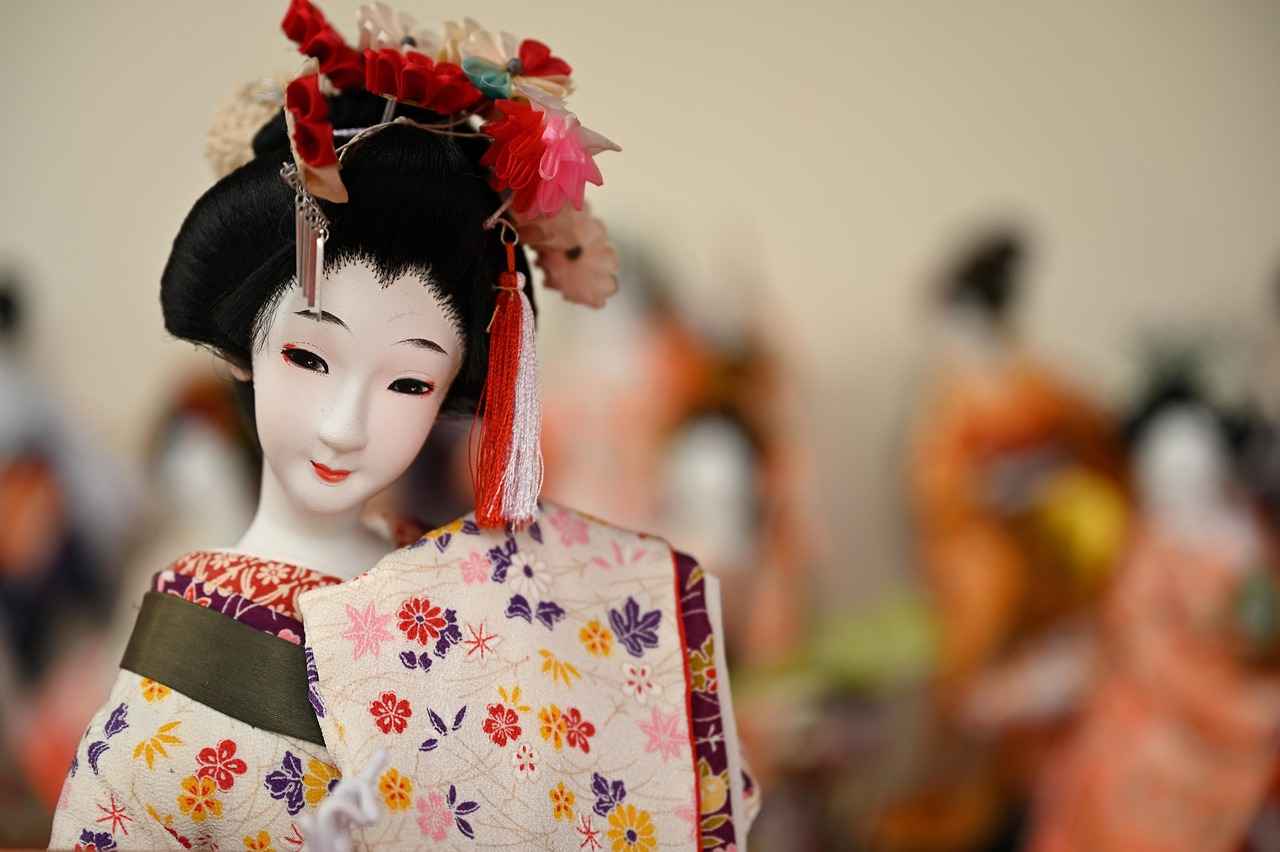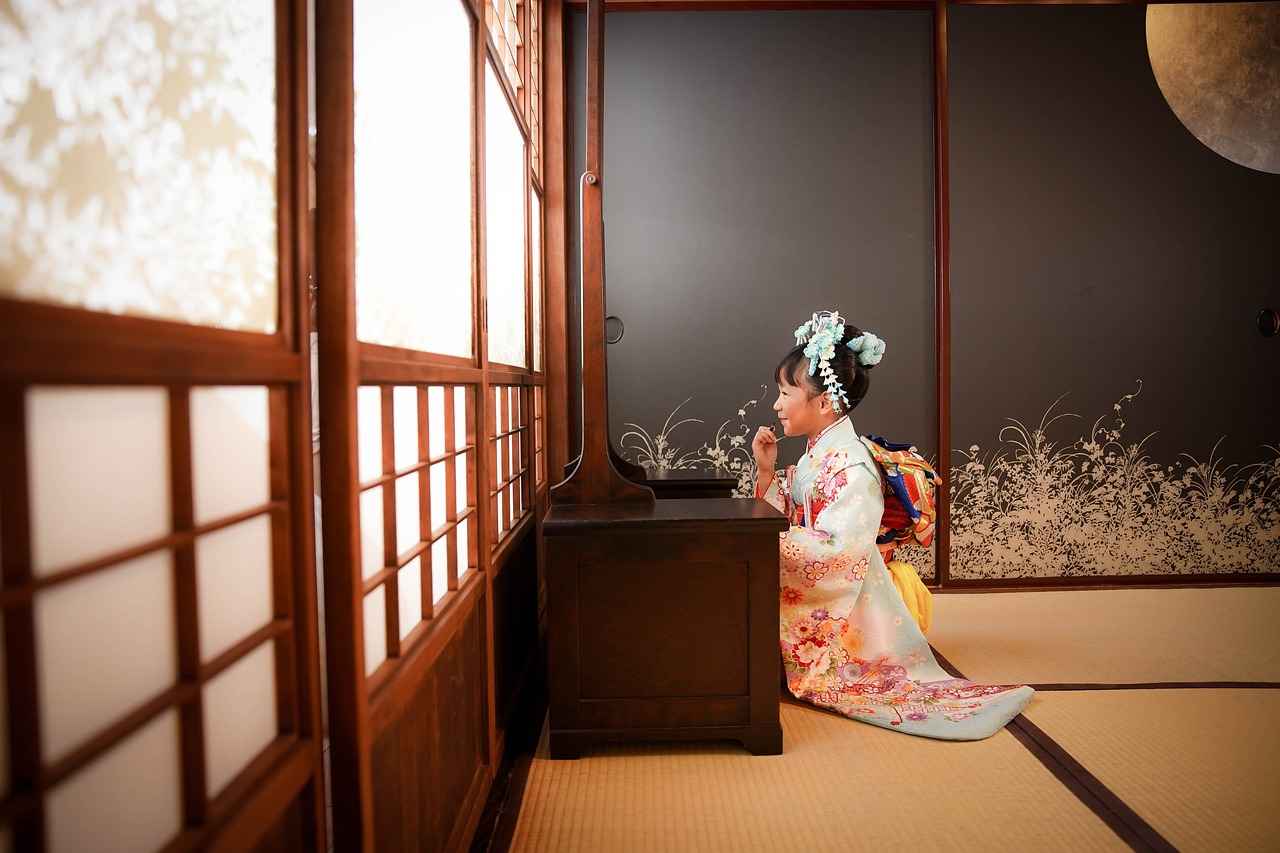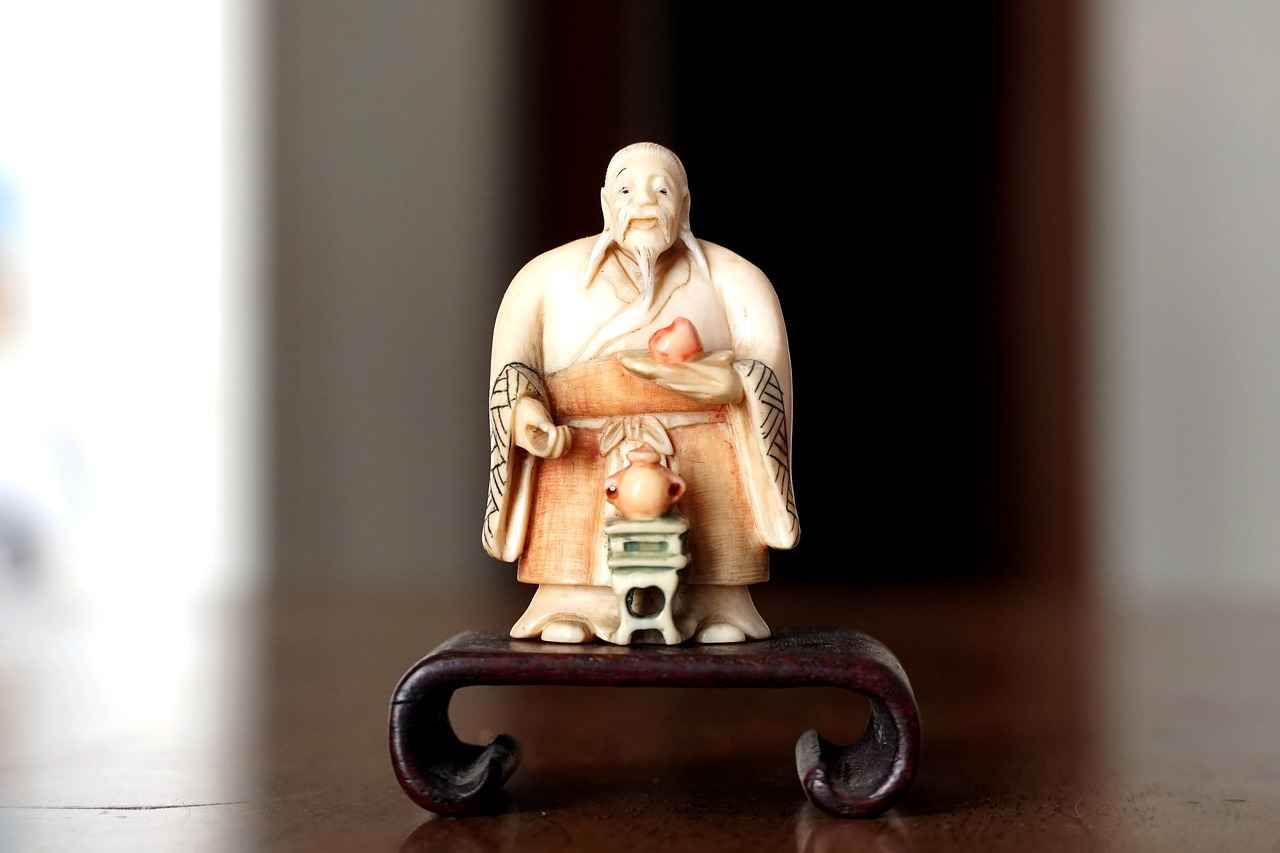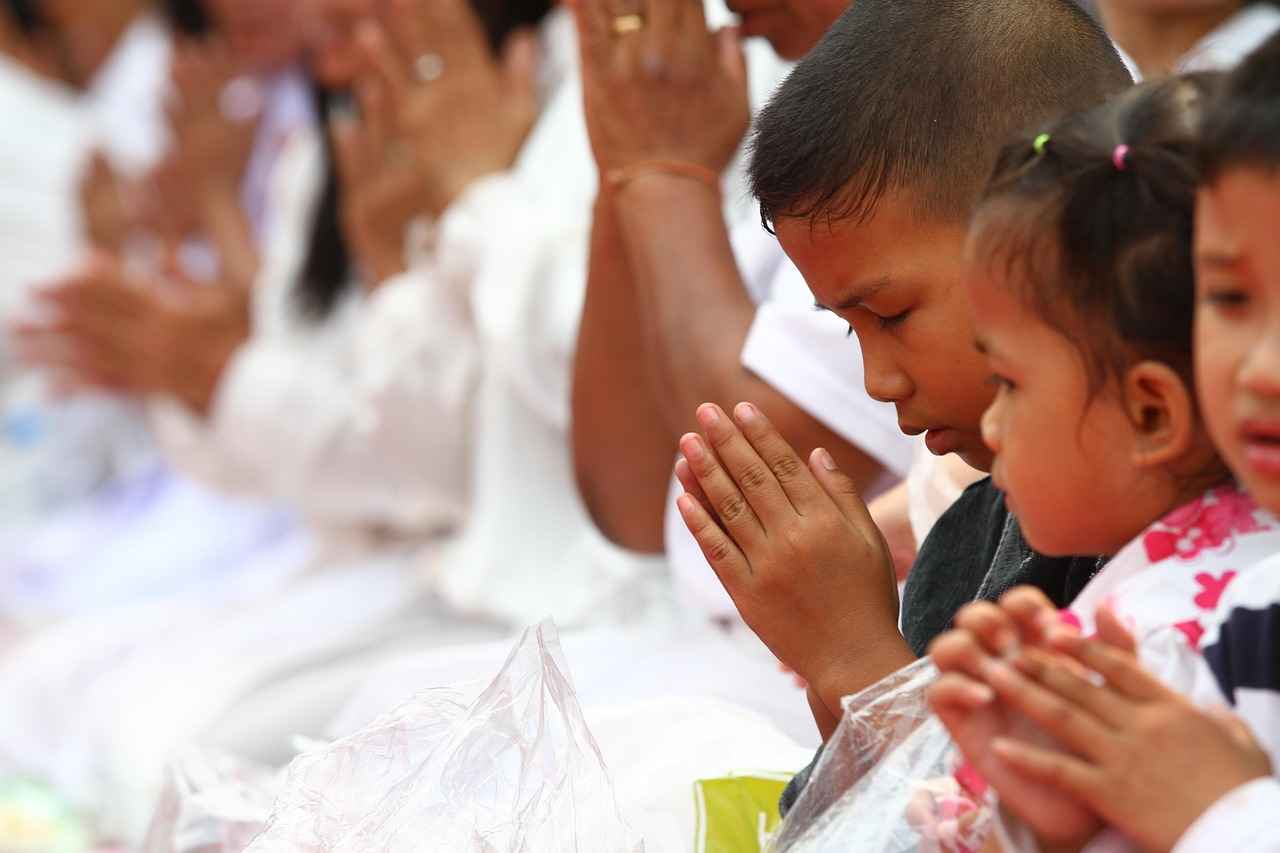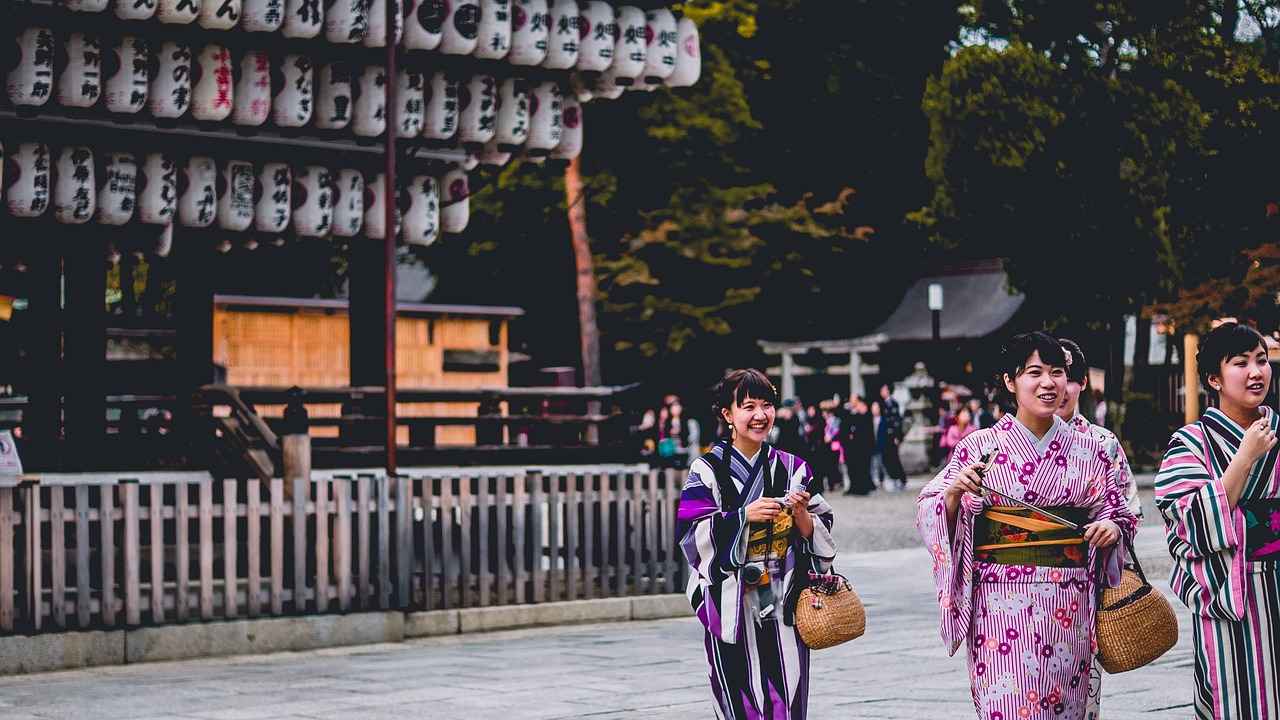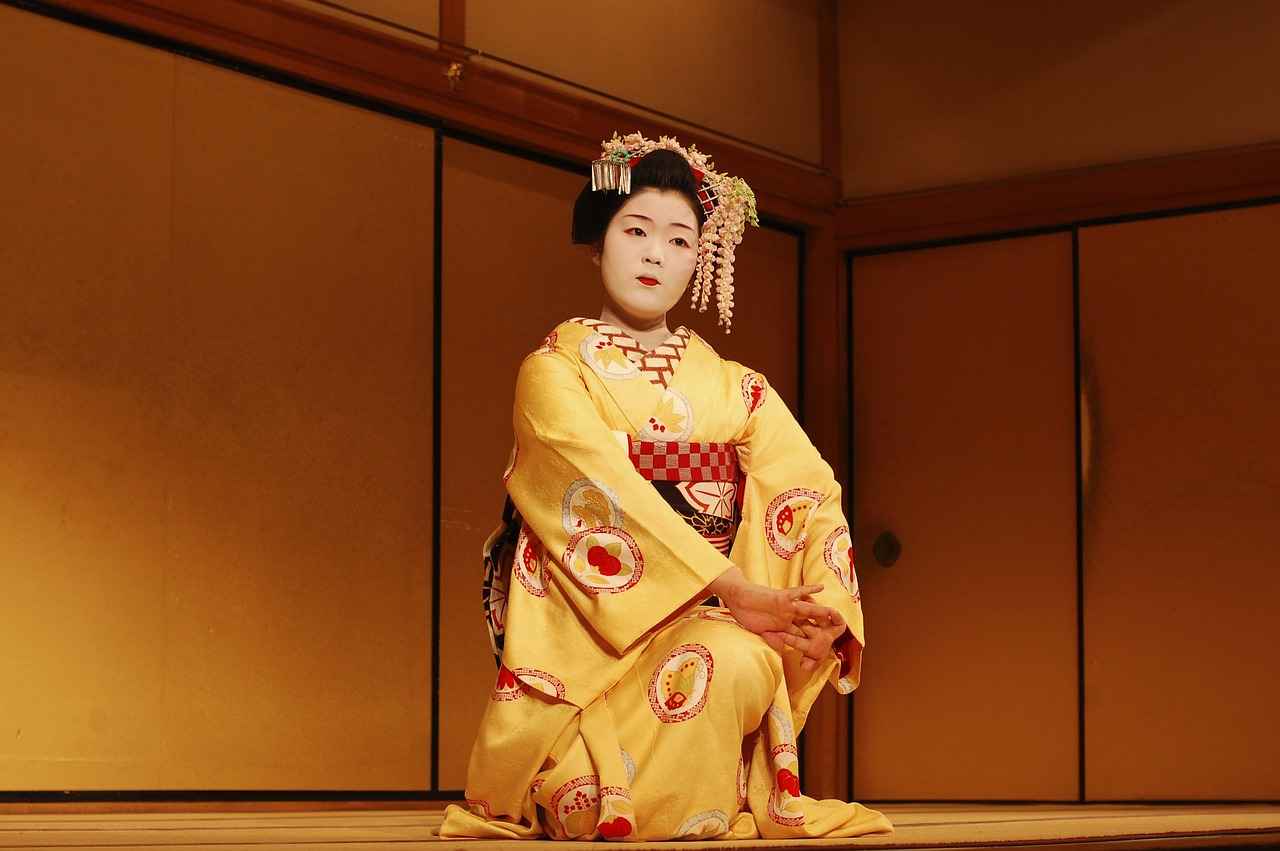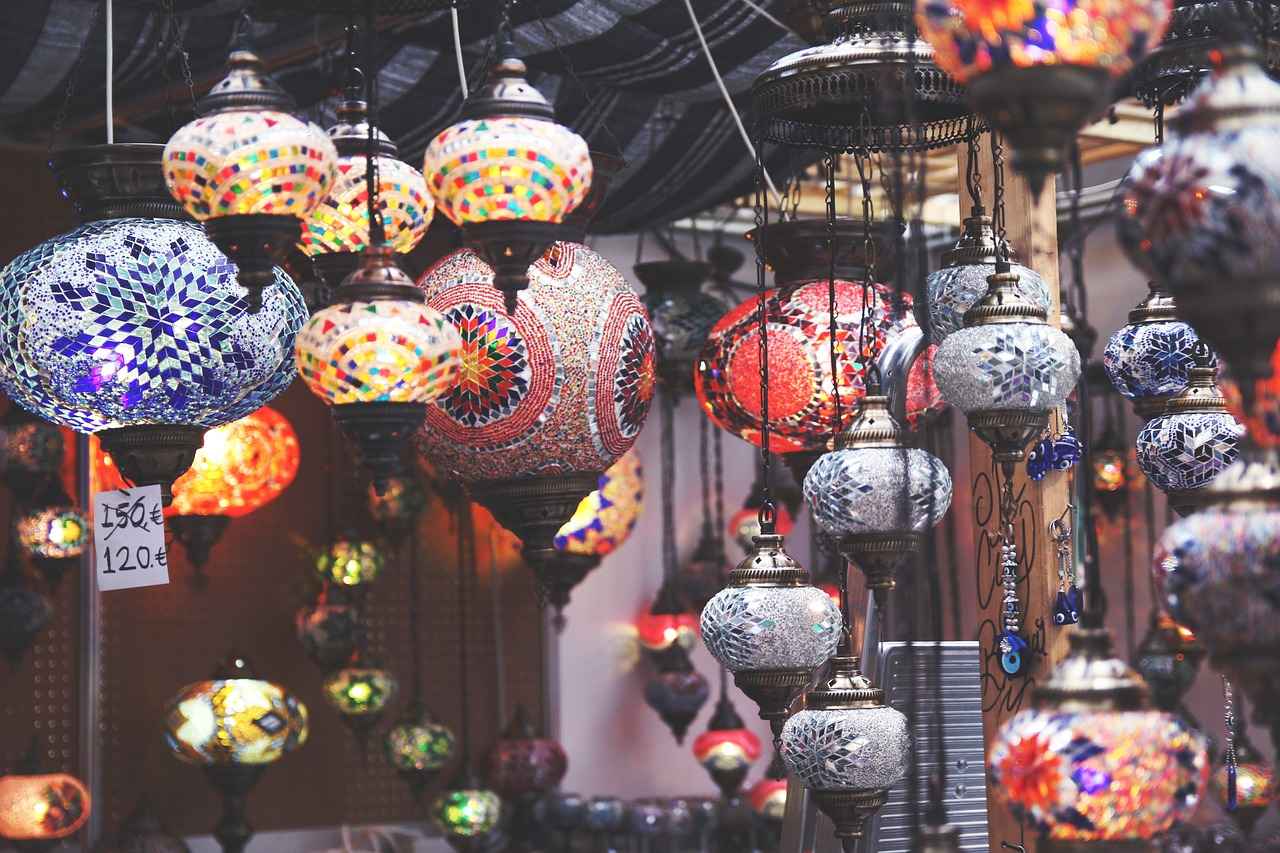This article delves into the rich history and cultural significance of the kimono in Japan, exploring its symbolism, various styles, and the role it plays in modern society.
Historical Background of the Kimono
Understanding the origins of the kimono provides insight into its evolution and significance throughout Japanese history. The kimono dates back to the Heian period (794-1185), where it was primarily worn by the aristocracy. Over the centuries, it transformed into a garment embraced by all social classes, adapting to the cultural shifts of Japan.
Symbolism of the Kimono
The kimono is more than just clothing; it embodies various symbols, including status, gender, and cultural identity. Each kimono tells a story about the wearer, reflecting their personality and social standing.
- Colors and Patterns: The choice of colors and patterns in kimono design holds deep significance, often conveying messages about the wearer’s mood, season, and occasion.
- Seasonal Significance: Different colors and motifs are associated with specific seasons in Japan, making the kimono a seasonal representation of nature and cultural events.
- Gender Differences: Kimonos vary greatly between genders, with distinct styles and patterns that reflect traditional gender roles and societal expectations.
Types of Kimonos
There are various types of kimonos, each designed for specific occasions, from formal ceremonies to casual wear, showcasing the versatility of this traditional garment.
Modern Adaptations of the Kimono
In contemporary society, the kimono has undergone adaptations, merging traditional aesthetics with modern fashion trends. Fashion designers are increasingly incorporating kimono elements into their collections, bridging the gap between traditional Japanese attire and global fashion trends.
Kimono Wearing Etiquette
Understanding the etiquette surrounding kimono wearing is essential for proper appreciation. Specific customs and practices honor Japanese culture, especially during events such as weddings and festivals.
The Future of the Kimono
As society evolves, the future of the kimono remains vibrant. There are ongoing discussions about its role in cultural identity and fashion innovation, promising continued relevance in Japanese culture.

Historical Background of the Kimono
The Historical Background of the Kimono delves into the origins and development of this iconic garment, highlighting its profound impact on Japanese culture.
The kimono, a traditional Japanese garment, has a rich history that dates back to the Heian period (794-1185). Initially, it was a simple robe worn by both men and women, characterized by its straight seams and lack of a defined waist. Over the centuries, the kimono has evolved in style, fabric, and significance, reflecting changes in Japanese society.
During the Edo period (1603-1868), the kimono became a symbol of status and identity. The styles and colors varied significantly based on the wearer’s social class, age, and occasion. For instance, the furisode, a long-sleeved kimono, was worn by young unmarried women, while the tomosode, a more subdued design, was favored by married women.
The Meiji Restoration in the late 19th century marked a significant turning point for the kimono. As Japan opened up to Western influences, the traditional garment faced challenges from Western-style clothing. Despite this, the kimono adapted and remained a vital part of Japanese culture, often reserved for special occasions such as weddings, festivals, and tea ceremonies.
Today, the kimono is celebrated not only as a cultural artifact but also as a form of artistic expression. Contemporary designers are reinterpreting traditional motifs and patterns, merging them with modern aesthetics to create innovative designs that appeal to younger generations.
In conclusion, understanding the historical background of the kimono provides valuable insight into its evolution and enduring significance in Japanese culture. As it continues to adapt to modern trends, the kimono remains a powerful symbol of Japan’s rich heritage.

Symbolism of the Kimono
The kimono is a profound representation of Japanese culture, transcending mere clothing to embody a rich tapestry of symbols and meanings. In Japan, the kimono serves as a canvas that illustrates a person’s status, gender, and cultural identity, while also reflecting their individual personality and social standing.
Historically, the kimono has been worn by various social classes, and the fabric, color, and style often indicated the wearer’s social rank. For instance, the use of luxurious silk and intricate designs was typically reserved for the aristocracy, while simpler materials and patterns were common among the working class. This distinction highlights how the kimono has been intertwined with the social hierarchy throughout Japan’s history.
Moreover, the kimono is deeply tied to gender roles in Japanese society. The styles and patterns differ significantly between men’s and women’s kimonos, with women’s kimonos often featuring vibrant colors and elaborate designs, while men’s styles tend to be more subdued. This divergence not only reflects traditional gender expectations but also showcases the beauty of gender expression within the framework of cultural attire.
The symbolism of the kimono extends beyond social and gender identity; it is also a vital marker of cultural heritage. Each kimono carries with it a story, often tied to specific occasions such as weddings, festivals, and other significant life events. The choice of patterns and colors can convey emotions and signify the season, making the kimono a living expression of nature and tradition.
In conclusion, the kimono is not just a traditional garment; it is a powerful symbol of Japanese identity that continues to evolve. By understanding its rich symbolism, one gains deeper insight into the values and traditions that shape Japanese culture today.
Colors and Patterns
The choice of colors and patterns in kimono design is a fascinating aspect of Japanese culture that transcends mere aesthetics. Each color and pattern carries deep significance, often reflecting the wearer’s mood, the season, and the occasion for which the kimono is worn. This intricate relationship between color, pattern, and meaning enhances the expressive quality of the garment, making it a powerful form of personal and cultural expression.
In Japan, colors are not just visually appealing; they are imbued with symbolic meanings. For instance, red is commonly associated with joy and celebration, making it a popular choice for weddings and festive occasions. In contrast, blue may evoke a sense of calm and tranquility, often seen in kimonos worn during more subdued events. The careful selection of colors allows the wearer to convey their emotional state and intentions without uttering a single word.
Patterns also play a crucial role in kimono design. Traditional motifs, such as cherry blossoms or cranes, are not only beautiful but also carry cultural significance. For example, cherry blossoms symbolize the transient nature of life, while cranes represent longevity and good fortune. The inclusion of these patterns can denote the wearer’s aspirations or the significance of the event they are attending.
Moreover, the choice of colors and patterns varies with the seasons, creating a dynamic relationship between the garment and the natural world. In spring, bright and floral designs are favored, while autumn may see deeper, richer hues that reflect the changing leaves. This seasonal significance allows the kimono to serve as a living representation of nature’s cycles, further enhancing its cultural relevance.
In conclusion, the colors and patterns of kimonos are not merely decorative elements; they are a profound language of expression that conveys a multitude of messages about the wearer. By understanding these meanings, one can appreciate the kimono not just as a piece of clothing, but as a rich tapestry of cultural identity and personal expression.
Seasonal Significance
The kimono, a traditional Japanese garment, is deeply intertwined with the seasons, reflecting the beauty of nature and cultural events throughout the year. Each season in Japan brings with it a unique palette of colors and motifs that are carefully chosen to align with the natural world and the sentiments associated with that time of year.
Spring is often represented by soft, pastel colors, such as pinks and light greens, symbolizing the blooming of cherry blossoms. Kimonos worn during this season frequently feature floral patterns, celebrating renewal and new beginnings. The hanami festival, where people gather to view cherry blossoms, is a perfect occasion for wearing these delicate designs.
As the seasons transition into summer, the colors become more vibrant and lively. Bright blues, yellows, and reds dominate the kimono landscape, reflecting the warmth and energy of the sun. Summer kimonos, or yukata, are often made from lightweight cotton, making them ideal for festivals and fireworks displays. Patterns such as waves or fireworks are popularly featured, enhancing the festive atmosphere.
With the arrival of autumn, kimonos take on richer, deeper hues like burgundy, orange, and gold, mirroring the changing leaves. Motifs of maple leaves and other autumnal symbols are commonly seen, embodying the beauty of the season. Special occasions, such as Shichi-Go-San (a rite of passage for children), often call for these elegant designs.
Finally, in winter, kimonos are adorned with darker colors and intricate patterns, often featuring images of snowflakes and pine trees. The use of heavier materials provides warmth, making them suitable for the cold weather. Events like New Year celebrations see families donning kimonos that symbolize good fortune and prosperity.
In conclusion, the seasonal significance of kimono colors and motifs not only showcases the beauty of nature but also reflects the rich cultural heritage of Japan. Wearing a kimono is a way to honor these traditions while celebrating the ever-changing landscape of the seasons.
Gender Differences
Gender Differences in Kimono Styles
The kimono, a quintessential symbol of Japanese culture, showcases a rich tapestry of styles that vary significantly between genders. These differences are not merely aesthetic; they are deeply rooted in traditional gender roles and societal expectations that have evolved over centuries.
Distinct Styles for Men and Women
Men’s kimonos are typically more subdued in color and pattern compared to women’s kimonos. The male kimono, known as yukata or hifu, often features simpler designs and is made from heavier fabrics. In contrast, women’s kimonos are vibrant and adorned with intricate patterns, showcasing a variety of colors that reflect the season and occasion.
| Aspect | Men’s Kimono | Women’s Kimono |
|---|---|---|
| Color Palette | Subdued, darker tones | Bright, vibrant colors |
| Patterns | Simple, geometric | Complex, floral, and seasonal |
| Fabric | Heavier fabrics | Lighter, flowing materials |
Symbolism and Cultural Expectations
The differences in kimono styles reflect not only aesthetic choices but also cultural expectations. For instance, women’s kimonos often symbolize femininity, grace, and beauty, while men’s kimonos are associated with strength and practicality. This division highlights how traditional roles are expressed through clothing, influencing how individuals are perceived within society.
Conclusion
Understanding the gender differences in kimono styles provides valuable insight into the broader context of Japanese culture. As society continues to evolve, these traditional garments remain a powerful representation of identity and heritage, bridging past and present.
Types of Kimonos
The kimono, a traditional Japanese garment, is known for its elegance and versatility. Various types of kimonos exist, each meticulously crafted for specific occasions, showcasing the rich cultural heritage of Japan. Understanding these types can enhance appreciation for this iconic attire.
- Formal Kimonos: Often worn during ceremonies such as weddings, tea ceremonies, and graduations, formal kimonos are typically made from luxurious fabrics and feature intricate designs. The furisode, characterized by long sleeves, is a popular choice for young women during special occasions.
- Casual Kimonos: These are designed for everyday wear, often made from lighter materials. The yukata, a cotton kimono worn during summer festivals, is a perfect example. Its vibrant colors and simple patterns make it a favorite for casual outings.
- Seasonal Kimonos: Kimonos can also be categorized based on the seasons. For instance, autumn kimonos may feature motifs of falling leaves, while spring kimonos often display floral patterns, reflecting the beauty of nature throughout the year.
- Children’s Kimonos: Specially designed for children, these kimonos are often colorful and adorned with playful patterns. They are commonly worn during festivals and Shichi-Go-San, a traditional rite of passage for young children.
- Men’s Kimonos: Typically more subdued in color and design, men’s kimonos, such as the hakama, are worn during formal occasions and ceremonies. They often consist of a simple kimono jacket paired with trousers.
Each type of kimono plays a vital role in Japanese culture, representing not only fashion but also social customs and traditions. As society evolves, the kimono continues to adapt, remaining a cherished symbol of Japanese identity.

Modern Adaptations of the Kimono
The kimono, a traditional Japanese garment, has undergone significant transformations in recent years. In today’s fast-paced world, this iconic piece of clothing has found a way to merge its rich heritage with contemporary fashion, making it increasingly appealing to younger generations.
Modern adaptations of the kimono are evident in various aspects of society. Designers are creatively integrating kimono elements into their collections, resulting in a fusion of traditional aesthetics and modern trends. This blend not only revitalizes interest in the kimono but also allows for a broader interpretation of its use. For instance, kimono-inspired jackets and dresses are becoming popular in streetwear, showcasing the garment’s versatility.
Moreover, the rise of social media platforms has played a crucial role in popularizing the kimono among younger audiences. Influencers and fashion enthusiasts are sharing their unique styles and interpretations of the kimono, often combining it with Western fashion elements. This visibility encourages a renewed appreciation for the garment, transforming it from a symbol of tradition into a canvas for personal expression.
- Fashion Shows: Many international fashion shows now feature collections that highlight kimono-inspired designs, bridging cultural gaps.
- Casual Wear: The kimono is increasingly worn as casual attire, often paired with jeans or modern accessories, making it accessible for everyday use.
- Events and Festivals: Contemporary events often encourage participants to wear kimonos, blending tradition with modern celebration.
As the world continues to evolve, the kimono remains a powerful symbol of cultural identity and fashion innovation. Its adaptability ensures that it retains relevance, allowing new generations to connect with their heritage while embracing modernity. The future of the kimono looks promising, as it continues to inspire creativity and cultural appreciation.
Kimono in Fashion Industry
The kimono has transcended its traditional roots, becoming a significant influence in the global fashion industry. Designers worldwide are increasingly drawing inspiration from this iconic Japanese garment, leading to a fascinating fusion of styles that honors both heritage and modernity.
One of the primary reasons for this trend is the unique aesthetics of the kimono. Its flowing lines, intricate patterns, and vibrant colors offer a refreshing contrast to contemporary Western fashion. Designers are not merely replicating the kimono; they are reinterpreting its elements to create garments that appeal to a broader audience. This evolution showcases the versatility of the kimono, allowing it to blend seamlessly with various fashion styles.
Moreover, the incorporation of kimono elements into fashion collections serves to celebrate cultural diversity. As the world becomes more interconnected, fashion designers are embracing global influences, and the kimono stands out as a symbol of rich cultural heritage. By integrating kimono designs, brands can create pieces that resonate with consumers seeking authenticity and connection to different cultures.
In addition to aesthetics, the sustainable practices associated with traditional kimono production are gaining attention. Many designers are opting for eco-friendly materials and techniques, aligning with the growing demand for sustainable fashion. This not only honors the craftsmanship of kimono-making but also addresses modern concerns about environmental impact.
As we look to the future, it is clear that the kimono will continue to play a vital role in the fashion industry. Its ability to adapt and inspire ensures that it remains relevant, bridging the gap between traditional Japanese attire and contemporary fashion trends. This ongoing dialogue between past and present not only enriches the fashion landscape but also fosters a deeper appreciation for cultural heritage.
Kimono as a Cultural Statement
Wearing a kimono today transcends mere fashion; it is a profound cultural statement that connects individuals to their rich heritage. This traditional Japanese garment, with its intricate designs and deep-rooted history, symbolizes a bridge between the past and the present. As globalization increases, the kimono has emerged as a powerful emblem of cultural identity, fostering appreciation for Japanese traditions across the globe.
In contemporary society, the kimono serves multiple purposes. Firstly, it allows individuals to express their cultural pride while participating in global conversations about identity and heritage. Many people don the kimono during significant events, such as weddings, festivals, and cultural celebrations, showcasing its enduring relevance. This practice not only honors Japanese customs but also invites others to appreciate the beauty and artistry of this traditional attire.
Moreover, the kimono has adapted to modern fashion trends, with designers incorporating its elements into contemporary clothing. This fusion of styles helps to maintain the kimono’s relevance, particularly among younger generations who seek to honor their roots while embracing modernity. As a result, wearing a kimono can be seen as a celebration of cultural diversity, where individuals from various backgrounds can engage with and respect Japanese culture.
Additionally, the act of wearing a kimono can spark conversations about cultural appropriation and appreciation. It encourages individuals to reflect on the significance of the garment and its place within Japanese history. By wearing a kimono, one not only honors its traditional roots but also promotes a broader understanding of cultural exchange in our increasingly interconnected world.
In conclusion, the kimono is more than a garment; it is a powerful cultural statement that connects wearers to their heritage while fostering appreciation for Japanese traditions worldwide. As we navigate a globalized society, the kimono stands as a testament to the beauty of cultural identity and the importance of honoring our roots.
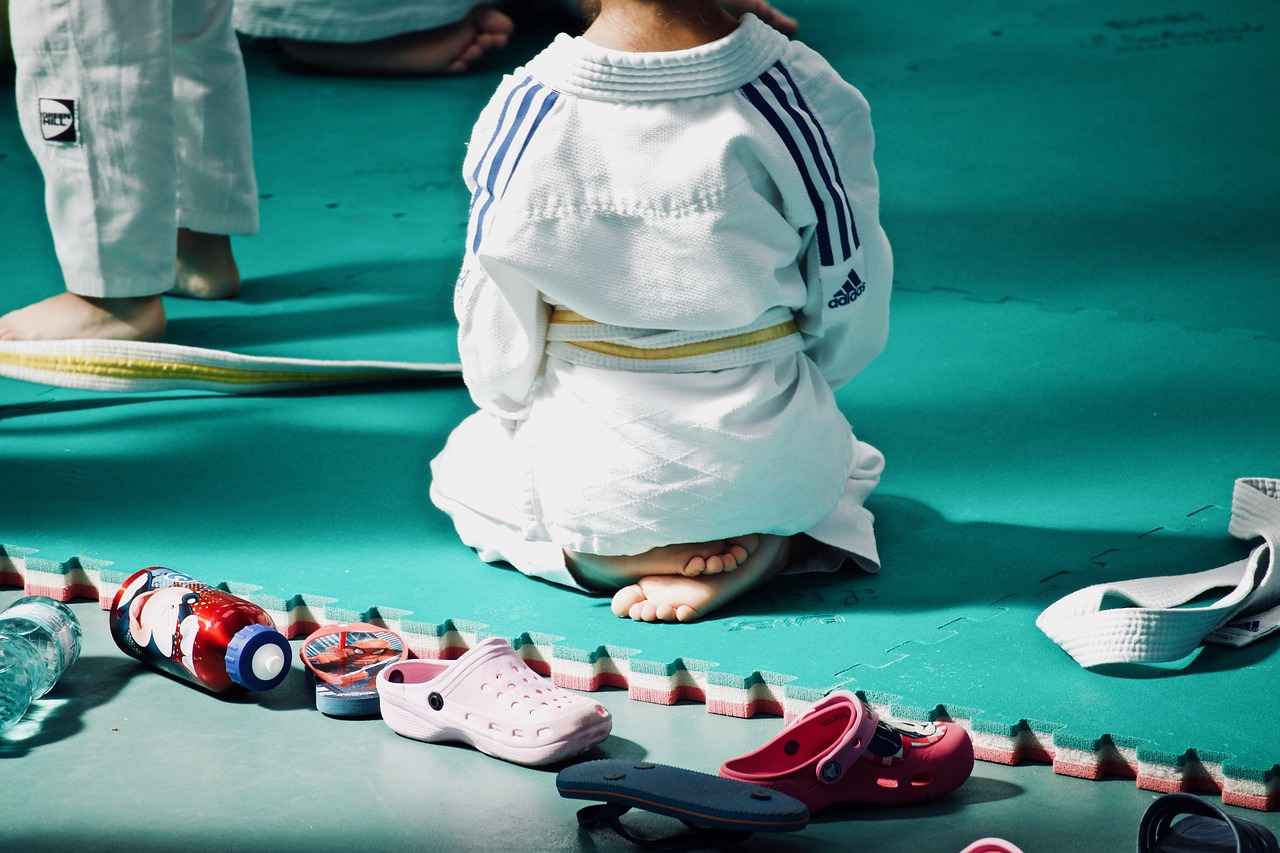
Kimono Wearing Etiquette
Understanding the etiquette surrounding kimono wearing is essential for proper appreciation, as it involves specific customs and practices that honor Japanese culture. The kimono is not merely a garment; it is a representation of Japan’s rich history and cultural identity. To fully appreciate this traditional attire, one must be aware of the various customs and practices associated with its wearing.
First and foremost, the occasion dictates the style and type of kimono worn. For instance, formal events such as weddings or tea ceremonies often require the most elaborate kimonos, while casual outings may call for simpler designs. It is crucial to choose a kimono that aligns with the event’s significance to show respect for the traditions involved.
Understanding the proper way to wear a kimono is also vital. This includes mastering the art of draping the fabric correctly, tying the obi (the sash) securely, and ensuring that all components of the outfit are in harmony. Each step in the dressing process is steeped in tradition, and taking the time to learn these techniques reflects a deep respect for Japanese culture.
Moreover, color and pattern choices are significant in kimono etiquette. Different colors and motifs can convey messages about the wearer’s status, age, and even the season. For example, bright colors and floral patterns are often favored in spring, while more subdued tones may be appropriate for winter. Understanding these nuances enhances the overall experience of wearing a kimono.
Finally, it is important to remember that extends beyond just the garment itself. The way one carries themselves while wearing a kimono—such as maintaining good posture and walking gracefully—also plays a role in honoring this beautiful tradition. By adhering to these customs, individuals can truly appreciate the cultural significance of the kimono and its place in Japanese society.
Occasions for Wearing a Kimono
The kimono is a quintessential symbol of Japanese culture, deeply intertwined with various ceremonies and celebrations. Understanding the occasions for wearing a kimono not only highlights its aesthetic beauty but also its cultural significance. This article delves into the specific events that call for distinct kimono styles, showcasing the garment’s role in preserving tradition and enhancing cultural identity.
- Weddings: One of the most important occasions for wearing a kimono is during weddings. The bride often wears a shiromuku, a pure white kimono symbolizing purity and new beginnings. This is complemented by vibrant colors in the obi and other accessories, reflecting joy and celebration.
- Seijin Shiki (Coming of Age Ceremony): This ceremony marks the transition of young adults into responsible members of society. Young women typically wear a furisode, characterized by its long sleeves and vibrant patterns, symbolizing their youth and potential.
- Festivals: Numerous festivals throughout Japan, such as Hanami (cherry blossom viewing) and Tanabata (Star Festival), encourage participants to don kimonos. The choice of colors and motifs often reflects the season, enhancing the festive atmosphere.
- Tea Ceremonies: The traditional Japanese tea ceremony, or chanoyu, is another occasion where kimonos are worn. Participants typically choose subdued colors and elegant patterns that embody the essence of tranquility and refinement.
- Funerals: In contrast to joyous occasions, kimonos are also worn during funerals, where a simple black kimono is preferred, symbolizing mourning and respect for the deceased.
In conclusion, the kimono serves as a vital link to Japanese heritage, adapting its styles to suit various occasions. Each event not only showcases the beauty of the garment but also reinforces the cultural values and traditions that have been passed down through generations.
How to Properly Wear a Kimono
Learning how to properly wear a kimono is an art that intertwines tradition, elegance, and cultural significance. This beautiful garment, which has been a symbol of Japanese heritage for centuries, requires a specific set of skills to ensure it is worn correctly. Mastering the techniques for draping and tying the obi is essential in achieving both comfort and aesthetic appeal.
The first step in wearing a kimono involves selecting the right type of kimono for the occasion. There are various styles, including formal, informal, and seasonal kimonos, each suited for different events. Once the appropriate kimono is chosen, the next step is to put it on correctly. This involves:
- Layering: Start with a juban (under-kimono) to provide a smooth base.
- Draping: Wrap the kimono around the body, ensuring that the left side overlaps the right, which is essential for proper etiquette.
- Securing: Use an obi (sash) to secure the kimono at the waist. The obi can be tied in various styles, such as the taiko knot, which is popular for formal occasions.
It is also crucial to pay attention to the length and fit of the kimono. The hem should ideally brush the floor when standing, and the sleeves should fall gracefully. Adjustments may be necessary to achieve the perfect look.
In addition to the physical aspects, understanding the cultural significance behind the kimono is equally important. Each color and pattern can convey messages about the wearer’s mood, season, and occasion. For instance, wearing a kimono with floral motifs is often associated with spring, while darker colors may be reserved for more somber occasions.
In conclusion, wearing a kimono is not merely about the garment itself; it is a reflection of Japanese culture and tradition. By mastering the techniques of draping and tying the obi, one can appreciate the beauty and significance of this timeless attire.
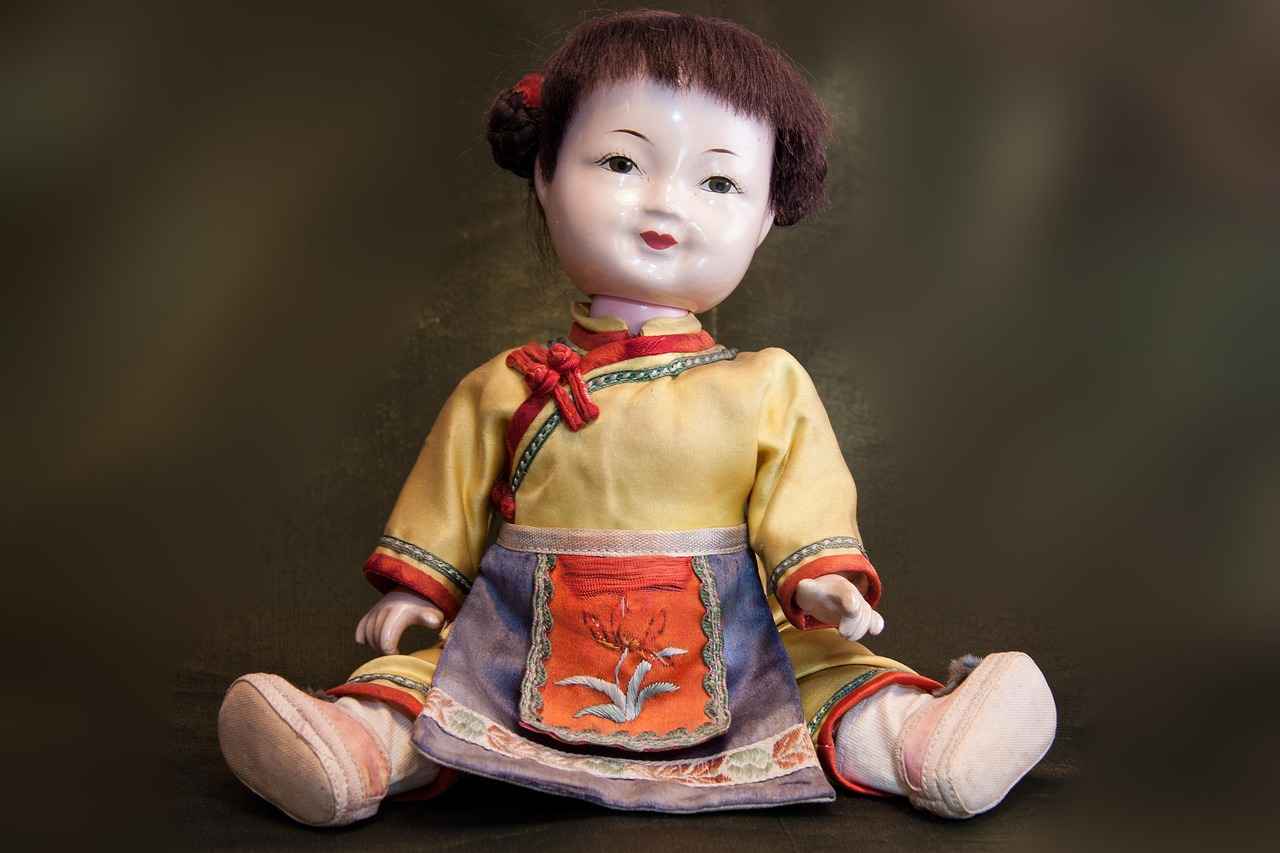
The Future of the Kimono
As we look toward the future, the kimono continues to adapt and thrive in a rapidly changing world. This iconic garment, deeply rooted in Japanese culture, is not just a relic of the past; it is a living symbol of cultural identity that resonates with both tradition and modernity. The ongoing evolution of the kimono reflects broader societal changes, making it relevant for new generations.
One of the primary discussions surrounding the kimono today is its role in cultural identity. For many, wearing a kimono is a way to connect with their heritage, expressing pride in their roots while navigating contemporary life. This connection is increasingly important in a globalized world where cultural exchange is prevalent, and individuals seek to maintain their unique identities.
Moreover, the kimono is experiencing a renaissance in the fashion industry. Designers are creatively blending traditional elements with modern aesthetics, resulting in innovative styles that appeal to younger audiences. This fusion not only keeps the kimono relevant but also showcases its versatility as a fashion statement. Fashion shows and collaborations featuring kimono-inspired designs are becoming more common, highlighting the garment’s potential to transcend cultural boundaries.
Additionally, the rise of social media has played a significant role in popularizing the kimono. Platforms like Instagram and TikTok allow enthusiasts to share their love for this traditional attire, creating a vibrant online community. This visibility encourages more people to explore wearing kimonos, whether for special occasions or as everyday attire.
In conclusion, the future of the kimono is bright and promising. With its rich history and ongoing adaptations, this garment serves as a bridge between the past and the future, embodying the spirit of innovation while honoring tradition. As discussions about cultural identity and fashion innovation continue, the kimono is poised to maintain its significance in Japanese culture for years to come.
Frequently Asked Questions
- What is the significance of the kimono in Japanese culture?
The kimono is a symbol of Japanese heritage and identity, representing not just clothing but a deep connection to history, tradition, and cultural values. It embodies various elements such as status, gender roles, and seasonal changes, making it a rich tapestry of meaning.
- Are there different types of kimonos for different occasions?
Absolutely! Kimonos come in various styles tailored for specific events, from formal ceremonies like weddings to casual outings. Each type has its unique design and purpose, showcasing the versatility of this traditional garment in Japanese life.
- How has the kimono evolved in modern fashion?
In recent years, the kimono has seen a resurgence in the fashion industry, with designers blending traditional elements with contemporary styles. This fusion keeps the kimono relevant, allowing younger generations to embrace their cultural roots while expressing modern aesthetics.
- What should I know about kimono wearing etiquette?
Wearing a kimono involves specific customs, such as the proper way to drape and tie the obi. Understanding these practices not only enhances your appreciation of the garment but also shows respect for Japanese culture and its traditions.
- Can anyone wear a kimono?
Yes! While traditionally worn by Japanese people, kimonos are now enjoyed by people from all backgrounds. Wearing a kimono can be a beautiful way to connect with Japanese culture and celebrate its rich heritage.
